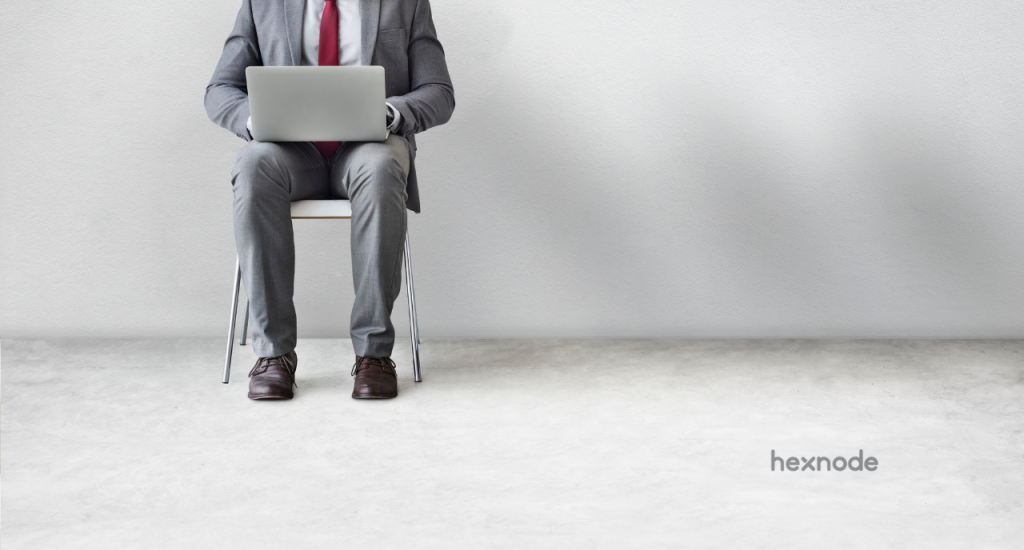The evolution of technology with respect to device specifications moves at a pace where most employees see their corporately owned devices replaced/upgraded every couple of years. Companies have realized that being updated with the latest tech and security features has never been more important to the smooth functioning of an enterprise’s online infrastructure.
As the years pass, hybrid work environments have become more commonplace. IT managers must realize the consequences if workplace devices are not kept up to date with the latest specifications and security features, in order to streamline workflow and improve productivity.
More often than not, a critical issue that plagues most ETM programs is security breaches – especially those enterprises still using legacy IT or Telecom Expense Management solutions. “Adapt to survive” has always been the law of the cyber jungle, and the signs that new security measures are required are there for all to see. This is where Device Lifecycle Management comes into the picture. DLM is a vital cog in the proper function of a competent Enterprise Technology Management (ETM) program.
- Automation is the key
- Device Lifecycle Management and EOL
- Out with the old, in with the new – what happens to the old?
- Is a UEM solution really necessary here?
- Featured resource
- Understanding Unified Endpoint Management (UEM)
- What do companies do with retired devices?
- Experience the joys of UEM with Hexnode
Automation is the key
In today’s modern hybrid work environment, technology needs are constantly evolving, which requires devices to be upgraded at regular intervals. In enterprises still using arguably outdated ETM programs, IT managers find it increasingly difficult to keep up with the constantly evolving needs of users. As a result, enterprises are moving away from a more hands-on approach towards automation. More specifically, a solution that encapsulates all the latest security requirements that provides for mass-upgradation/replacement of devices in a manner that doesn’t hinder workflow. In other words, Unified Endpoint Management. We’ll get to that part in a bit.
Device Lifecycle Management and EOL
Any competent ETM program will have a DLM solution that takes care of all the vital aspects down to the letter – from device onboarding to configuration all the way to device retirement. Check out Alessia Forster’s highly informative piece on a detailed look on all the critical aspects of a Device Lifecycle Management solution.
Out with the old, in with the new – what happens to the old?
In the world of technology, the adage “new is always better” rings true. Every year, devices take a step further in terms of functionality. That means every year;, companies need to stay updated with the latest devices to get access to the latest features that would increase operational efficiency.
Device onboarding, configuration, security are stages where IT companies tend to focus most of their manpower, when managing a device’s lifecycle; and for good reason. Sure, they get access to the latest technology every year by constantly upgrading. After all, it is and always has been “adapt to survive”. But what happens to the devices you replace? What happens to the has-beens, the ‘old’ devices once you upgrade? For the sake of operations, finances and of course, environmental concerns, simply discarding old devices would prove catastrophic in all three departments. This is where a sound EOL (End-of-Life) strategy would prove instrumental in the proper functioning of your Device Lifecycle Management solution.
Is a UEM solution really necessary here?
On its face, the strategy implemented by companies where they go around finding the best-buy back rates for retired/outdated devices seems fairly sound. But with security threats being more advanced, the risk increases. Best case scenario, this strategy wouldn’t yield the best results financially and companies would risk leaving money on the table, something they wouldn’t be aware of at the time. Worst case scenario, in the event that your retired device has had a breach in security, it would be more catastrophic than any supposed financial loss. The exposure would potentially be crippling.
In hindsight, without any device- aware solution that ensures that critical company information has been wiped from a retired device, there really isn’t any other way to ensure that your device has been fully retired. Asking IT departments to handle a large array of devices has its security holes, unfortunately. With countless documents, spreadsheets and other files being used to keep track of all your devices, there is a reasonable high probability that x might not be equal to y. That leads to company assets being compromised with zero accountability. This is where Unified Endpoint Management steps in.
An all-knowing, all-encompassing platform that keeps track of all devices in every stage of your DLM strategy without skipping a beat. A solution like Hexnode that provides for a streamlined management process throughout the entire device life cycle – from enrollment up until device retirement.
With the help of Hexnode, any device that has been marked for EOL can be tracked by creating groups based on which device has been marked for end-of-life processing. With the help of reports generated, you have a trail that tracks every single action and state of your device. That takes care of the financial holes in your system as all your devices are now completely accounted for, all with a few clicks of your mouse.
Moving on to the security aspect, Hexnode makes sure every device marked for EOL would be fully wiped with the help of the Wipe Action present in the Hexnode portal. IT managers tasked with taking stock of devices will be able to neutralise any security breach by either tracking the device’s location or remotely wiping all data from the device. A fully automated solution that tracks every single movement and neutralises any potential threat to your cyber infrastructure. With all loose ends tied up, the final stage of your DLM strategy ensures the smooth and efficient running of operations.
But we’re not done yet.
Check out to know more about the emerging device platforms and how Unified Endpoint Management(UEM) solutions help enterprises manage these devices better.

Featured resource
Understanding Unified Endpoint Management (UEM)
What do companies do with retired devices?
You’d think we’d reached the end of the DLM process after successfully retiring your device. Not quite. Disposal/recycling of devices in an eco-friendly manner is as essential a stage as the ones before it, and must not be taken lightly.
Devices that are deemed surplus to corporate requirements do not necessarily mean that they are completely useless. Finding a new home for these devices or ensuring that these devices have been properly recycled is as important as onboarding them.
Hexnode would ensure that any retired device would have no way of restoring any corporate data that could fall into the wrong hands. These devices would be restored to their factory defaults, just like they were when they were first deployed. With the help of resellers and recyclers, Hexnode ensures that retired devices would find a new lease of life beyond its intended purpose, or would be disposed/recycled in the safest way possible.
Uninterrupted revenue streams, streamlined management and effective crisis management makes a UEM solutions like Hexnode the most suitable strategy for your company’s infrastructure moving forward.
Experience the joys of UEM with Hexnode
Benefit from a more streamlined and secure management platform with Hexnode UEM.
Tap to sign up




